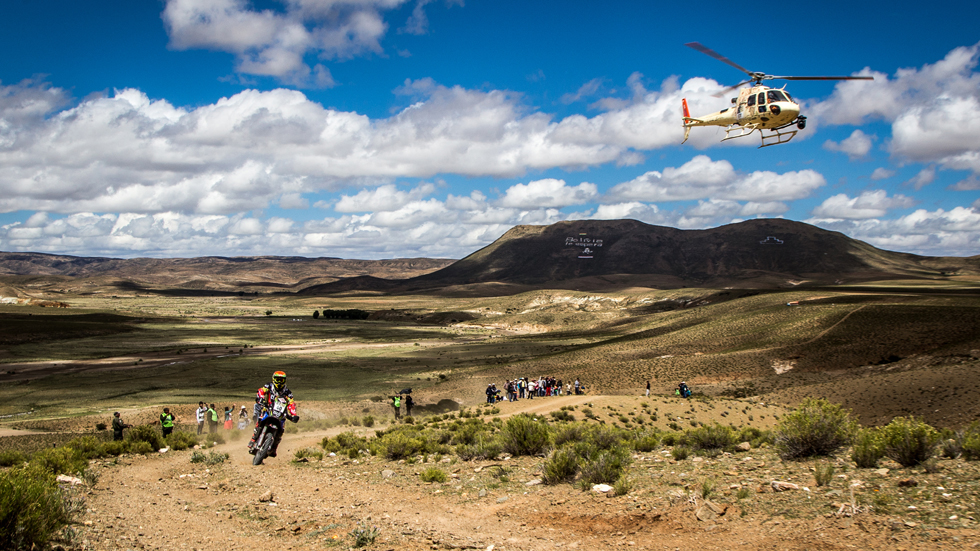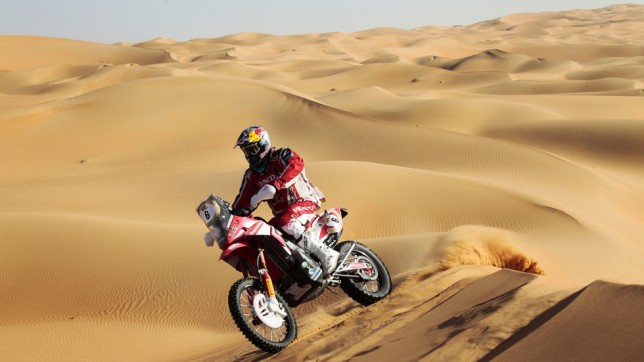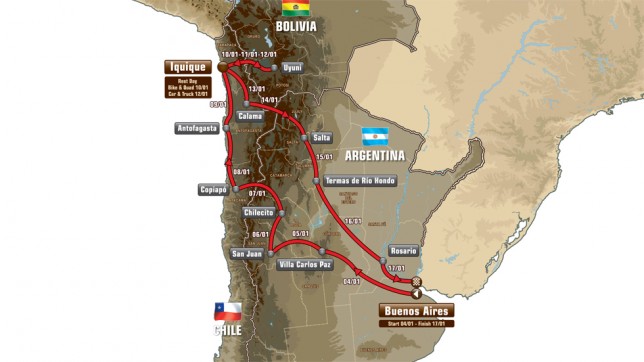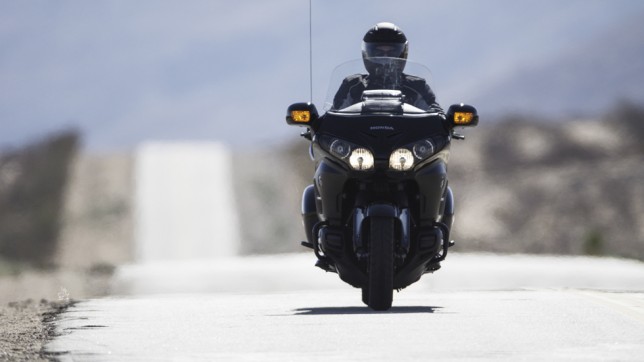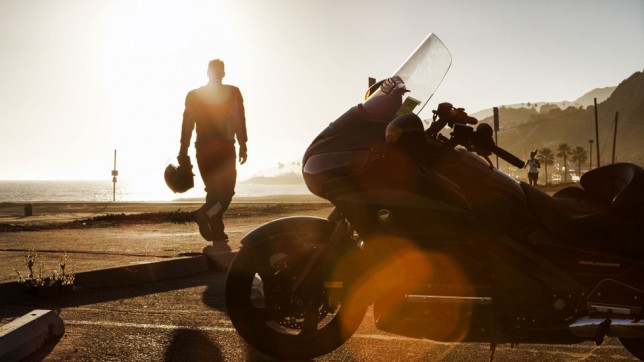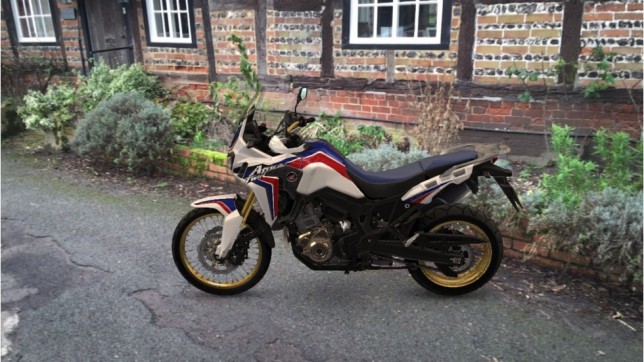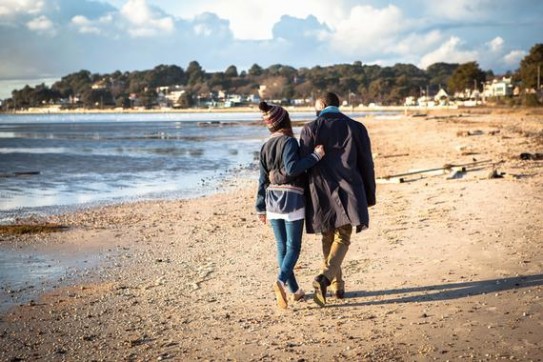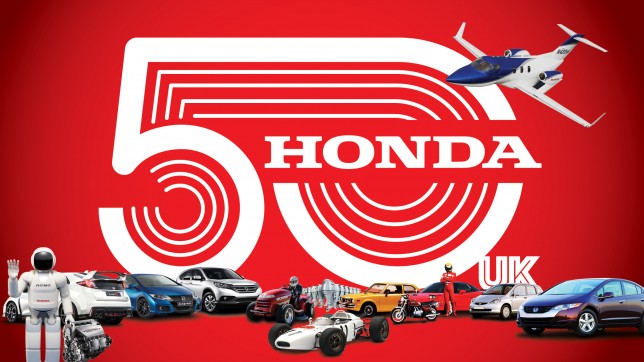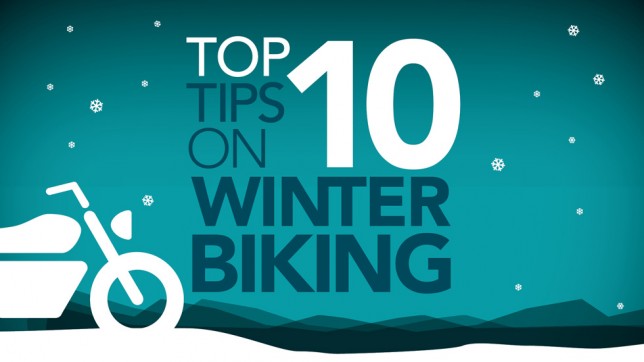by Bonnie Friend
Since its 1978 incarnation in Africa to today’s 9,000km adventure across South America’s Atacama Desert, Dakar is the ultimate (and most treacherous) rally in the world. If anyone understands this ultimate endurance test, from the near-impossible navigation conditions to holding your nerve in the sweltering heat, it’s Martino Bianchi. So as he prepares Honda’s riders for the 2015 adventure, we chatted to him to discover its trials, tribulations and raw racing appeal…
How do the riders prepare for Dakar?
They do races throughout the year but this is the main target. There are five riders and they do three or four races around the world beforehand as well as practising with the bikes and preparing physically in the gym. The most important thing for Dakar is navigation – the riders prepare the routes and do practice ones in similar terrain.
What’s a typical day at Dakar?
The race is 13 days and 9000km so a typical day starts very early at around four or five in the morning but the timed stages can’t start until the sun comes up, so they set off at around seven. On an average day, riding stops at around three in the afternoon followed by an hour for press interviews and team meetings. The riders then rest for a couple of hours and from six they start learning the routes for the next day. That takes a long time – while they stop for dinner but usually finish around 11pm.
What’s the hardest part of the race?
The length of the race and keeping your concentration through the whole rally is very hard. It’s difficult not to make a mistake in 13 or 14 days and on a motorcycle even more than in a car, it’s very important because a mistake can have very bad results.
What’s the most exciting part of Dakar?
It’s the adventure! The natural landscape is amazing! The enthusiasm of the people is also very important. There are fantastic fans in South America and they are an active part of the race.
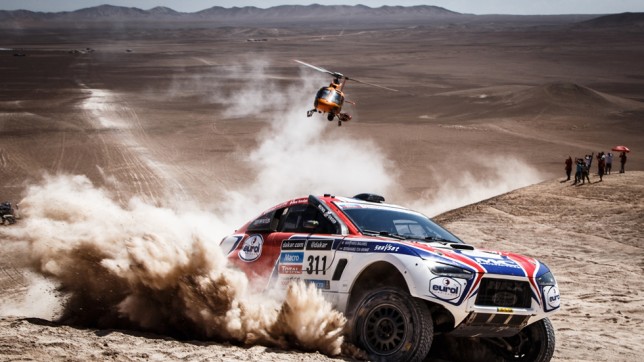
Dakar competitors come in all shapes and sizes from motorbikes and ATVs to bespoke buggies and trucks
What features are important for the bike so that it makes it through the race?
Dakar is a real chance to prove the durability and indestructible nature of a bike. It’s very important that it’s powerful because it’s a fast race on lots of different terrains including sand. It’s also vital that the handling of the bike is light and that it’s fast.
How does being along on those great distances affect the riders?
It’s difficult. Not just because you’re alone but because there’s the possibility of getting lost. When you do get lost it’s very hard to maintain your concentration, to start again and carry on in 40° heat; it’s tough! That’s why Dakar is almost never won by a young rider; you need experience.
What is unique about the Dakar Rally (if you can pinpoint just one thing)?
The adventure!
What have been the most daunting moments in Dakar’s history?
In Dakar in the past, when it was in Africa, it was a very different race but we still maintain the spirit of the event. Now riders eat in restaurants and stay in hotels; then they stayed in tents. It’s more organised and probably more civilised now, but people died in the early years of Dakar and I think it has moved in the right direction because it was too dangerous for everyone involved at the time.
How do you support the riders?
We support them in everything throughout the year. We have physiotherapists and doctors on hand, they have health checks twice a month, and of course in the six months leading up to the rally it is more intensive. During the race we do our best to keep them relaxed and we have teams on hand to help with that.
Do you change the engine for the race?
In Dakar there is a rule that every time you change the engine in the race you forfeit 15 minutes on your time. Last year Honda was the only team to use one engine throughout the race. Our target is never to change that.
How long can the bike run for before refuelling?
They have a 35-litre capacity and can run for around 250km.
What are you most looking forward to?
Winning Dakar! It’s a difficult race that requires experience but we have a winning team.
Need to know about Dakar
– The 2014 rally saw 713 riders and drivers compete.
– That included 174 motorcycles, 40 quad bikes, 147 cars and 70 trucks.
– The event drew crowds of 3.9 million across the three continents that the race covered, including Argentina, Chile and Bolivia.
– Navigation and endurance are the most difficult challenges that competitors face. Last year 48% managed to finish the race.



